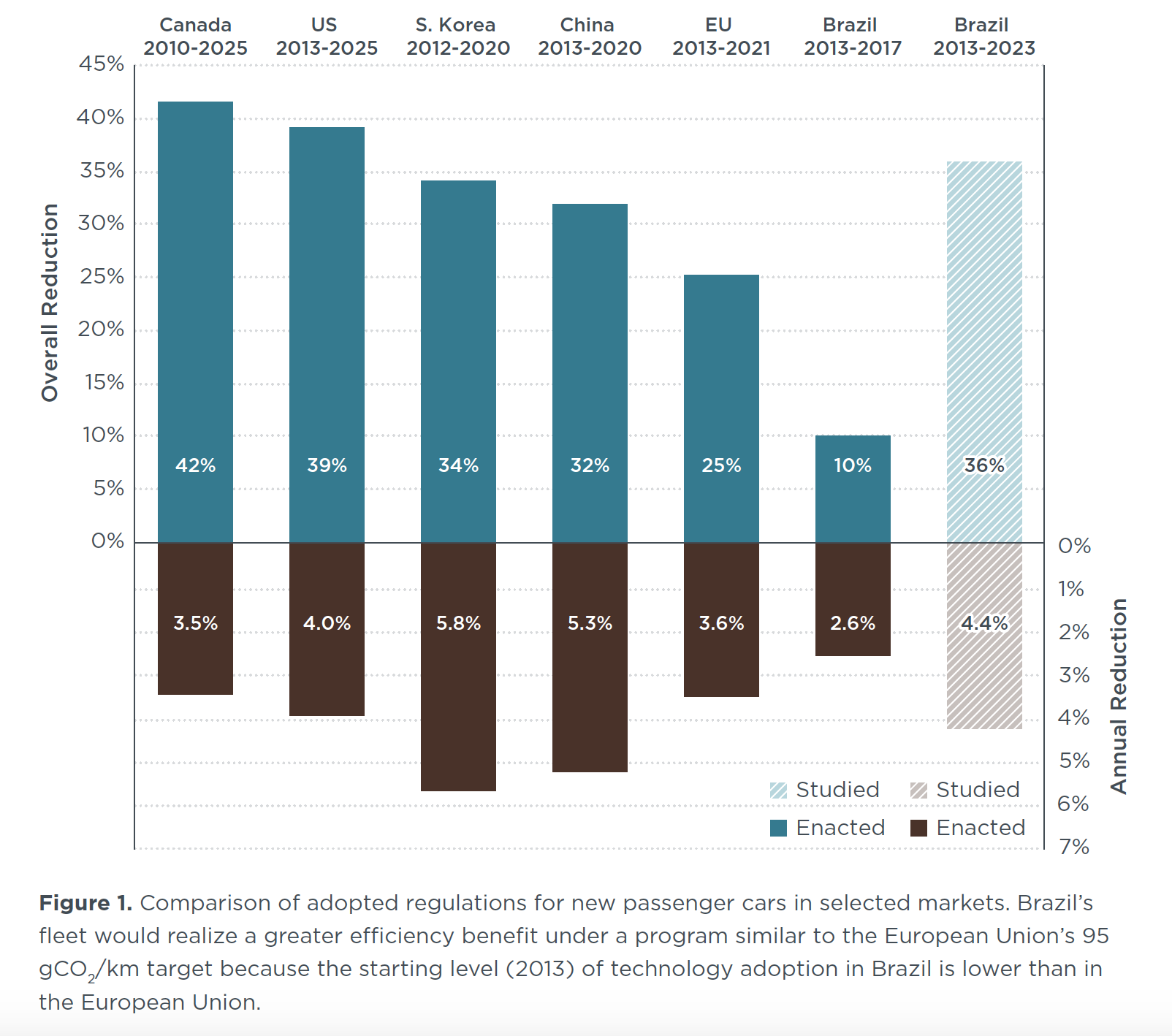White paper
Technology uptake, costs, and benefits under a next-phase passenger car efficiency program in Brazil
Brazil is the sixth largest market for new passenger vehicles worldwide and the largest market in Latin America. As of 2013, passenger vehicles sold in Brazil have adopted fewer fuel-saving technologies than other leading automotive markets, resulting in less efficient cars, especially when compared to markets with similarly sized vehicles, such as Europe or Japan. Moreover, passenger vehicles in Brazil are a substantial contributor to global greenhouse gas (GHG) emissions and energy consumption, emitting an estimated 105 million tonnes of CO2-equivalent and consuming more than 700,000 barrels of oil equivalent per day in 2015.
In 2012, the Brazilian government announced the Inovar-Auto program aimed at enhancing national competitiveness and incentivizing the auto industry to produce more technologically advanced, safer, and more efficient vehicles. As the program nears completion in 2017, it is important to evaluate whether manufacturers have met these targets in practice (which is pending the availability of detailed 2017 data) as well as consider options for further improving vehicle efficiency.
This analysis adapted the U.S. Environmental Protection Agency’s (EPA’s) OMEGA technology optimization model (2012 version) to assess the incremental costs to manufacturers of meeting a target of 1.27 MJ/km in 2023 compared with the Inovar-Auto 2017 target of 1.81 MJ/km (assuming average vehicle weight equal to the 2013 baseline year). Fuel savings to consumers were estimated based on the reduction in energy consumption by vehicle model combined with estimates of annual vehicle travel and projected fuel prices. According to the least-cost-technology pathway identified by OMEGA, the average new car sold in 2023 would save consumers about $4,040 (in 2016 U.S. dollars [USD]) over 15 years—about 2.4 times the cost of additional vehicle technology ($1,660). Since the 2012 EPA technology assessment for its regulations, rapid advances in emerging engine technologies are resulting in the ability to achieve lower fuel consumption levels at lower cost, indicating that these cost estimates are conservative.
In addition to direct benefits to consumers, by 2035, the evaluated targets would achieve a 23% reduction in projected GHG emissions and energy consumption of Brazil’s passenger car fleet, preventing the annual release of 35 million tonnes of CO2-equivalent and saving the energy equivalent of 250,000 barrels of oil per day.

